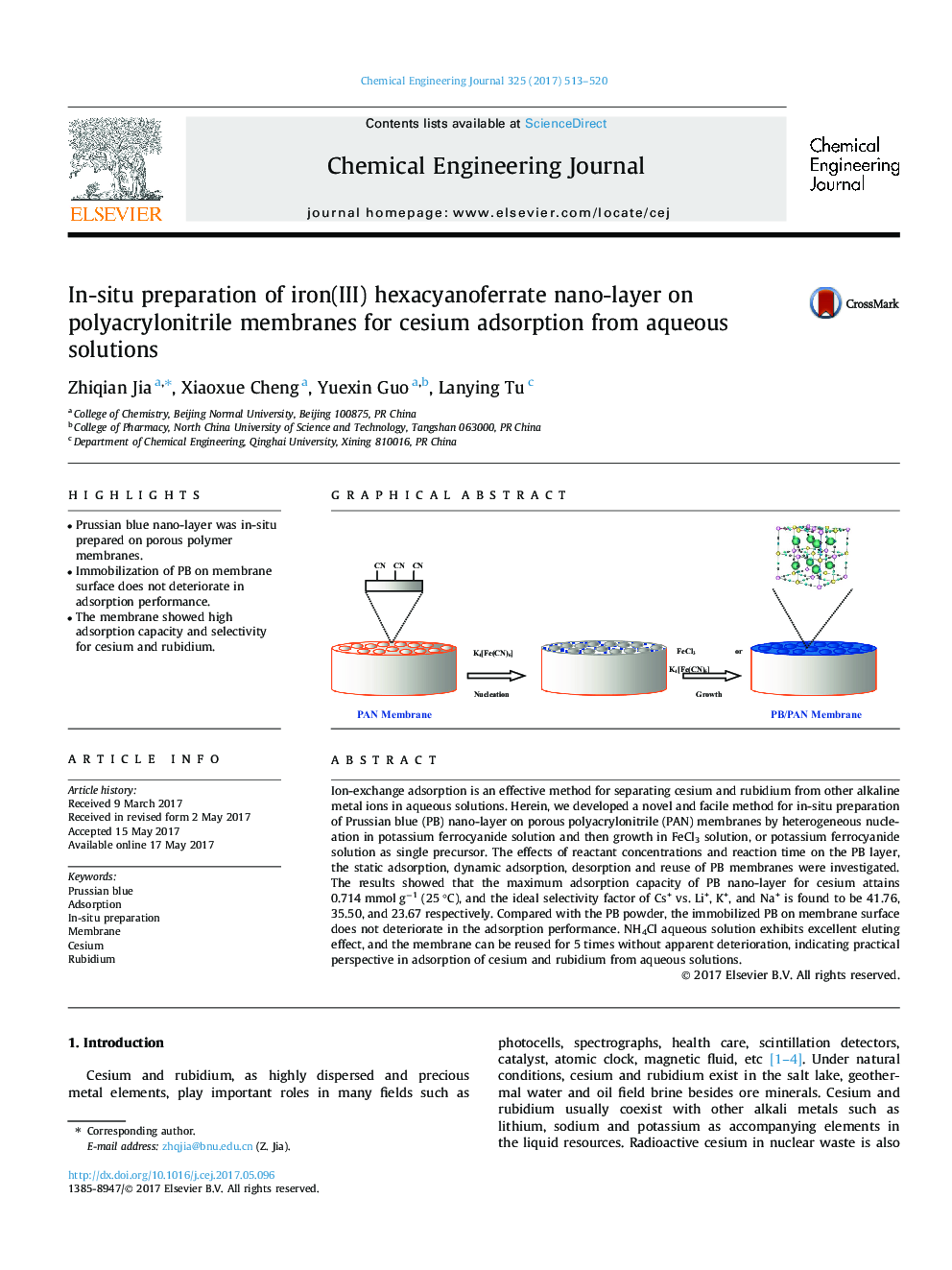| Article ID | Journal | Published Year | Pages | File Type |
|---|---|---|---|---|
| 6466220 | Chemical Engineering Journal | 2017 | 8 Pages |
â¢Prussian blue nano-layer was in-situ prepared on porous polymer membranes.â¢Immobilization of PB on membrane surface does not deteriorate in adsorption performance.â¢The membrane showed high adsorption capacity and selectivity for cesium and rubidium.
Ion-exchange adsorption is an effective method for separating cesium and rubidium from other alkaline metal ions in aqueous solutions. Herein, we developed a novel and facile method for in-situ preparation of Prussian blue (PB) nano-layer on porous polyacrylonitrile (PAN) membranes by heterogeneous nucleation in potassium ferrocyanide solution and then growth in FeCl3 solution, or potassium ferrocyanide solution as single precursor. The effects of reactant concentrations and reaction time on the PB layer, the static adsorption, dynamic adsorption, desorption and reuse of PB membranes were investigated. The results showed that the maximum adsorption capacity of PB nano-layer for cesium attains 0.714 mmol gâ1 (25 °C), and the ideal selectivity factor of Cs+ vs. Li+, K+, and Na+ is found to be 41.76, 35.50, and 23.67 respectively. Compared with the PB powder, the immobilized PB on membrane surface does not deteriorate in the adsorption performance. NH4Cl aqueous solution exhibits excellent eluting effect, and the membrane can be reused for 5 times without apparent deterioration, indicating practical perspective in adsorption of cesium and rubidium from aqueous solutions.
Graphical abstractDownload high-res image (139KB)Download full-size image
